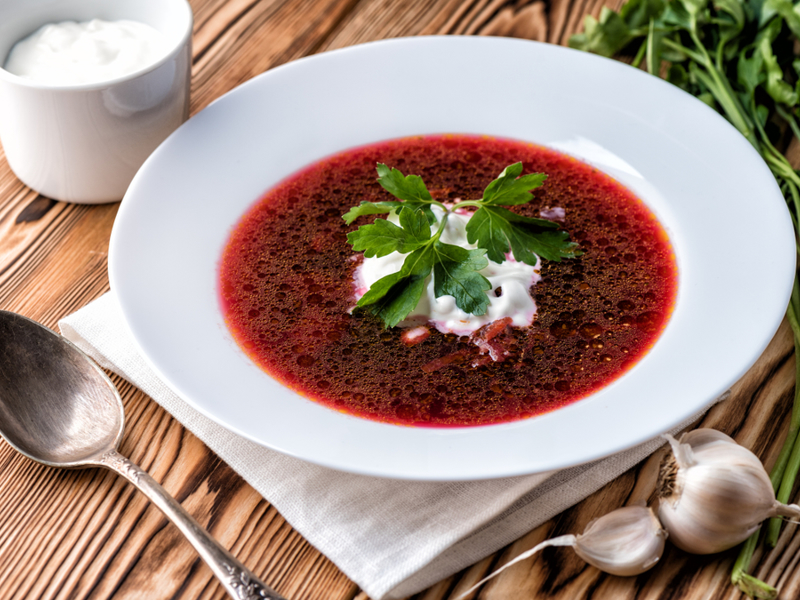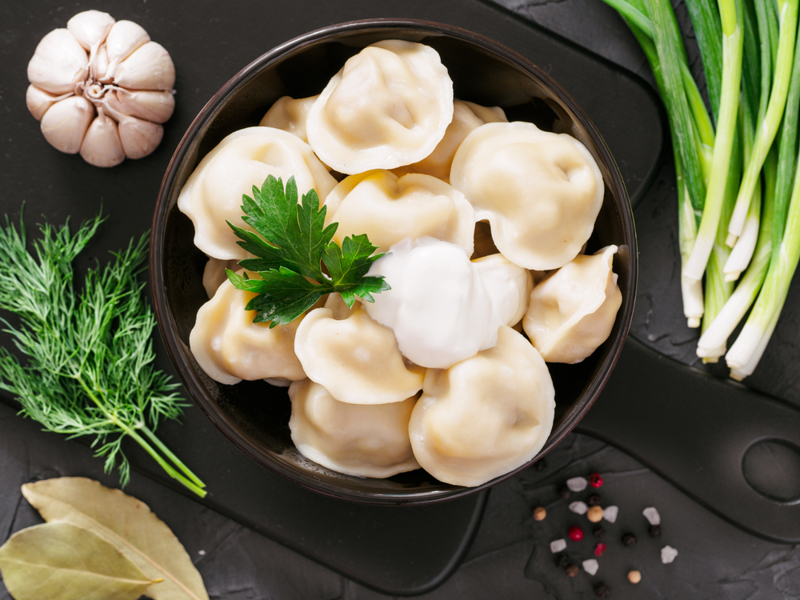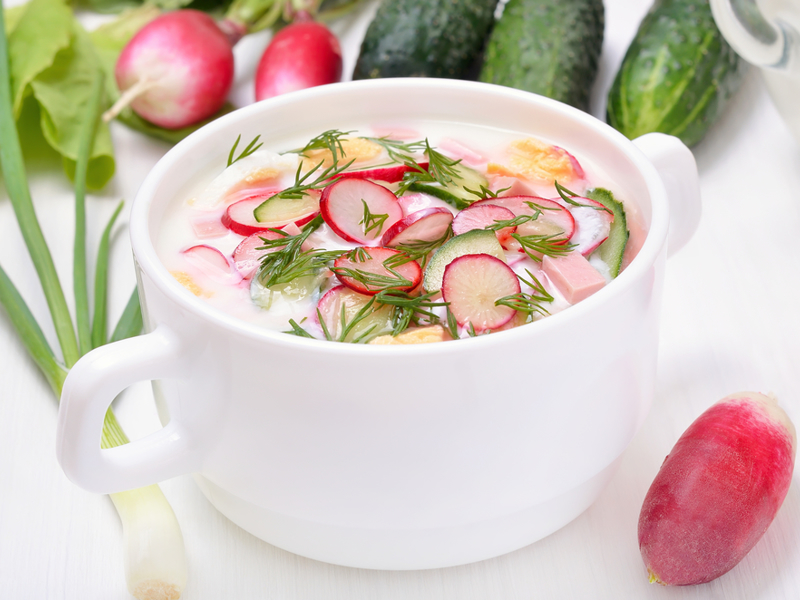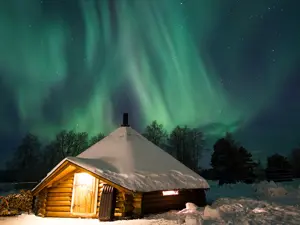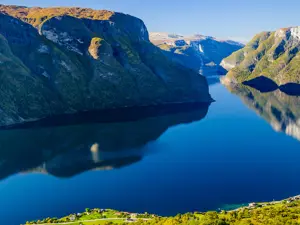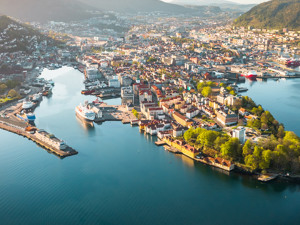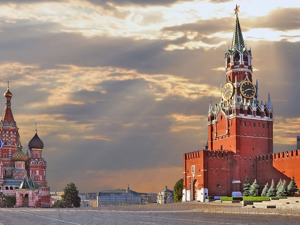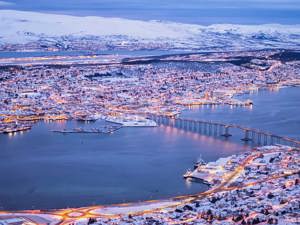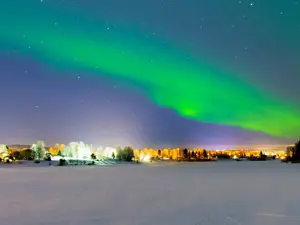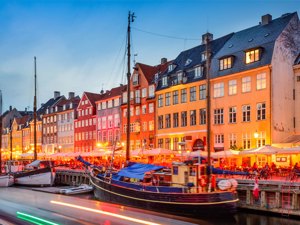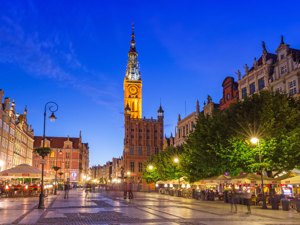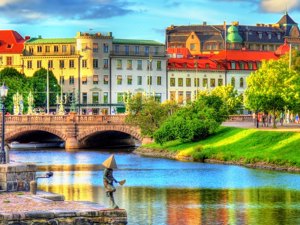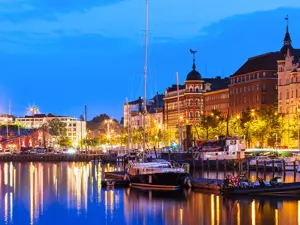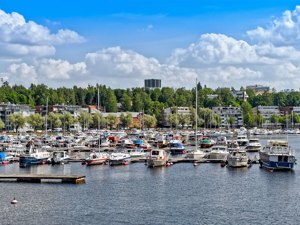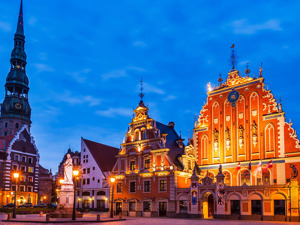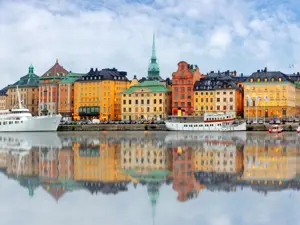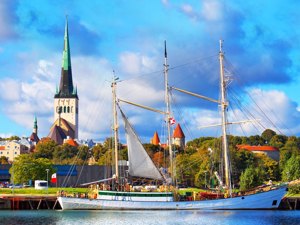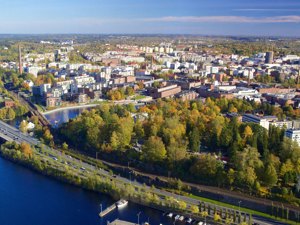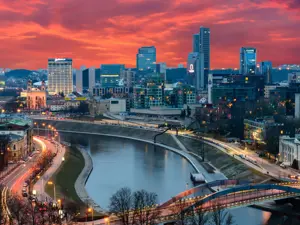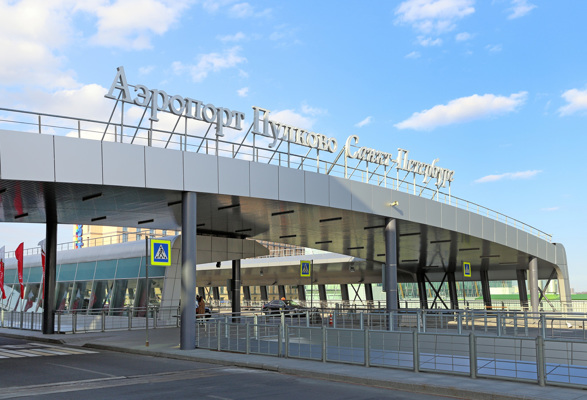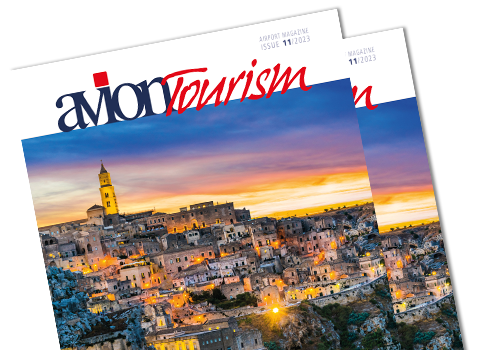The Venice of the North
A wonderful combination of nocturnal light, architectural beauty and exquisite scenery create the unforgettable magic and striking spectacle of nights without full darkness, known as the “white nights”, in St. Petersburg. This phenomenon is due to the particular geographical position of the city, which is situated on the 60th parallel. From May to the beginning of July, for a period of approximately 50 days, the sun sets only 9° below the horizon, so that the night sky is bathed in eternal twilight. The longest day is 21 June, when daylight last for almost 18 hours, from 4.30 am to 10 pm. St. Petersburg is the only large city in the world where this phenomenon occurs each summer, giving it an irresistible charm.
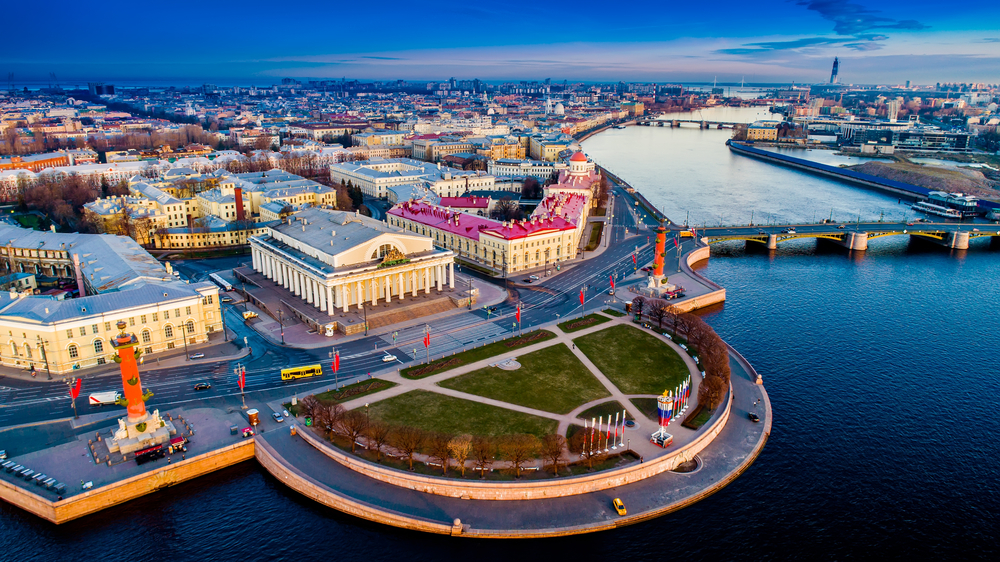
Vasilyevsky Island in St. Petersburg. Photo: Copyright © Sisterscom.com / Shutterstock
An ancestral bond exists with spring ever since the city’s foundation by Peter the Great on the banks of the river Neva. Even in other periods of the year, however, the city, with its extraordinary architectural and artistic heritage, displays a splendour without equal.
The elegant facades of the buildings and houses reflect changing colour tones whilst seeming to jostle for space in the squares. It was Peter the Great who invited Italian architects to his court to build what was to become St. Petersburg, a city that is still known throughout the world as the “Venice of the North”.
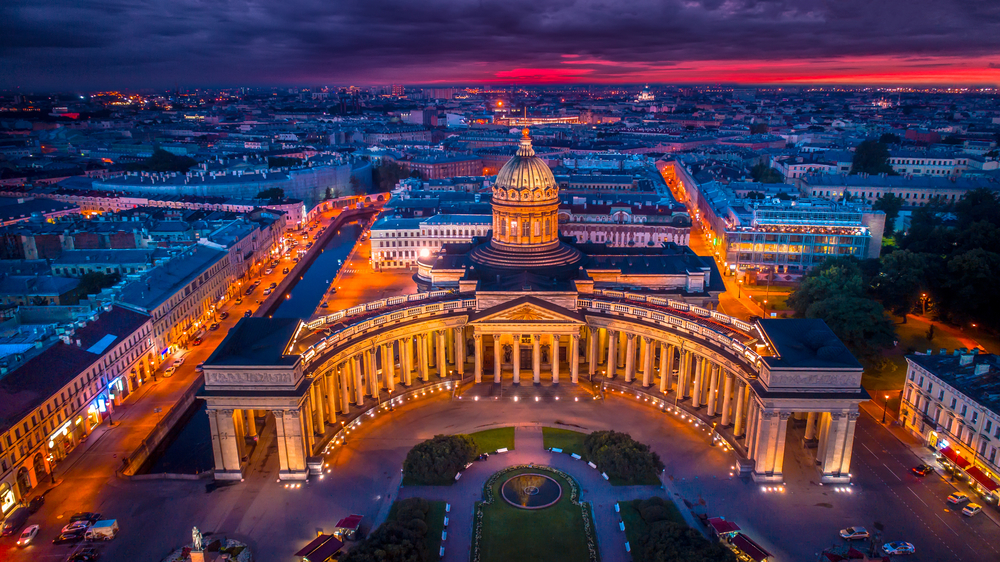
Kazan Cathedral, St. Petersburg. Photo: Copyright © Sisterscom.com / Shutterstock
The close relationship between Italians and the inhabitants of St. Petersburg is seen in the abundance of buildings, roads, squares and monuments that were the result of mutual collaboration and which today attract many tourists. The Bergamask architect, Giacomo Quarenghi, worked for 28 years at the court of the Empress Catherine II and Emperors Paul I and Alexander, contributing to enhancing the splendid city with numerous public and private buildings, which even today demonstrate his extraordinary ability for innovation and architectural design.
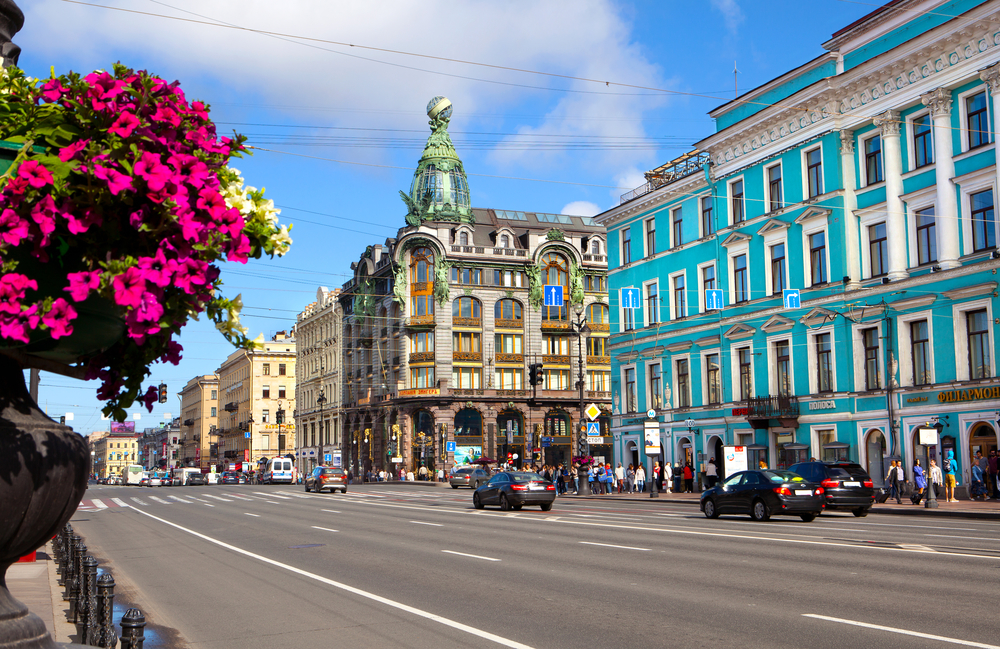
Nevski Prospect, St. Petersburg. Photo: Copyright © Sisterscom.com / Shutterstock
Nevski Prospect
Is the main thoroughfare of the city, which has been immortalised by poets and artists alike, the Winter Palace Square with its famous central granite column and the scenic square of rostral columns are the starting points of a walk among the beautiful sights of St. Petersburg.
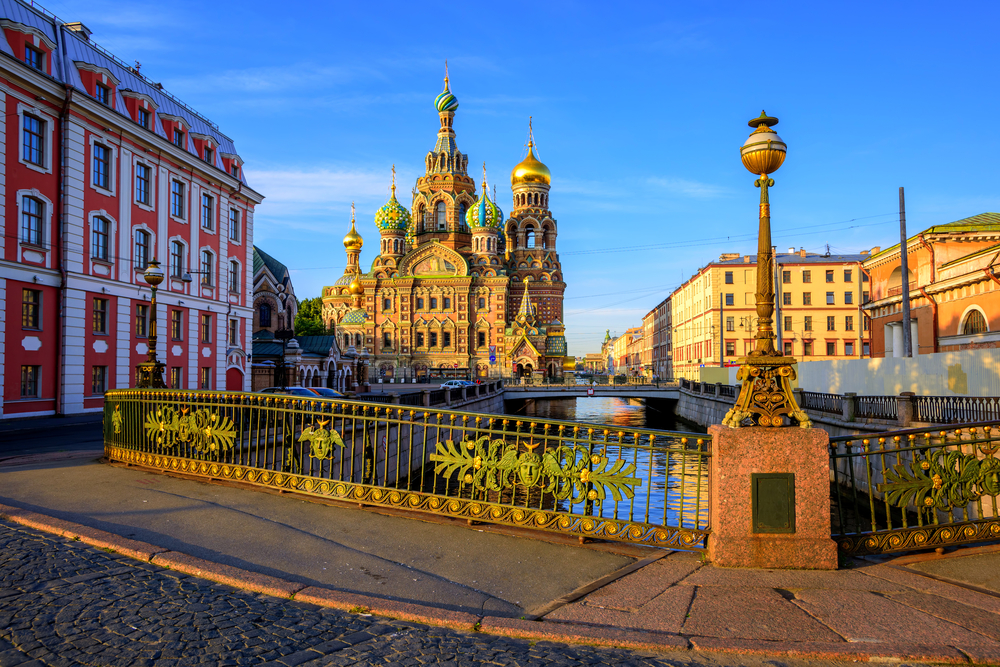
Church of Our Saviour on Spilled Blood. Photo: Copyright © Sisterscom.com / Shutterstock
Church of Our Saviour on Spilled Blood
The Griboedov canal leads to the marvellous Church of Our Saviour on Spilled Blood, one of the symbols of the city.
Peter and Paul Fortress
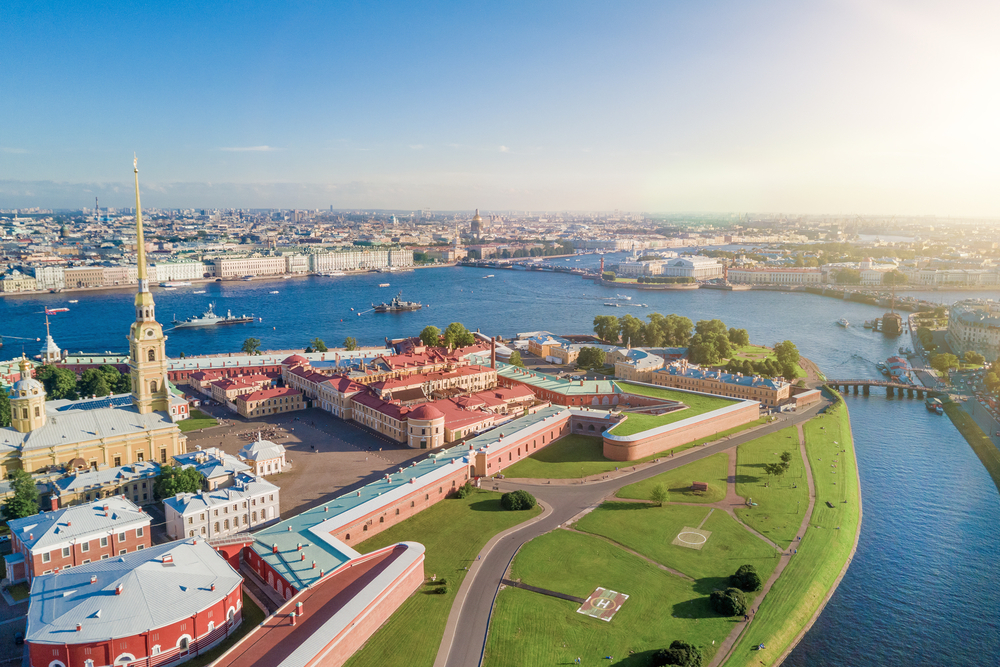
Peter and Paul Fortress. Photo: Copyright © Sisterscom.com / Shutterstock
An ideal tour continues to the Mariinsky Theatre, famous throughout the world for its ballet performances, on to the historic battle cruiser ‘Aurora’, which gave the signal at the start of the Bolshevik Revolution, and the Peter and Paul Fortress, the most ancient monument in the city which houses in its church the tombs of Emperors from Peter the Great to Nicholas II and his family, killed during the Revolution of 1917
The Hermitage
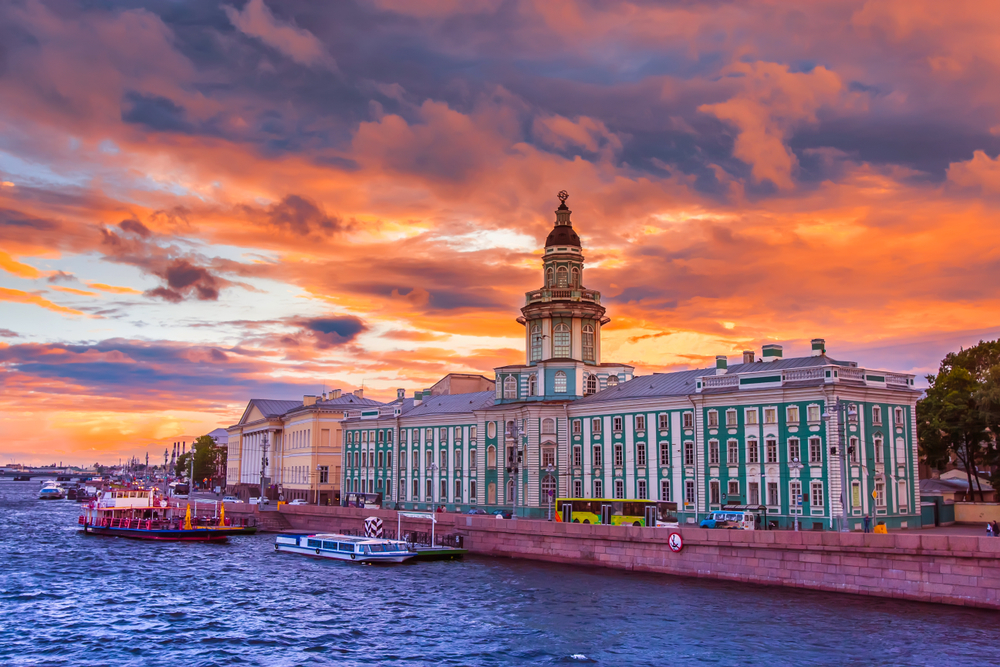
The Hermitage. Photo: Copyright © Sisterscom.com / Shutterstock
A visit to the Hermitage is a must. One of the largest museums in the world, its sumptuous exhibition rooms were once witness to the daily life of the emperors’ court. It houses collections of immense value - more than 2,700,000 items - including paintings by Leonardo da Vinci, Raphael, Rembrandt, and masterpieces by the French impressionists as well as Matisse, Picasso and Van Gogh.
The bridges
Even St. Petersburg, built on a network of rivers and canals, like Amsterdam and Venice acquires a unique and special charm. The bridges indispensable for the connections between the banks, have been decorated with sculptures, wrought iron works and particular street lamps. To admire there are: The Bridge of the Lions with the ties supported by statues of four lions, the Egyptian Bridge that crosses the Fontanka, the Trinity Bridge famous for its street lamps and the Anickov Bridge.
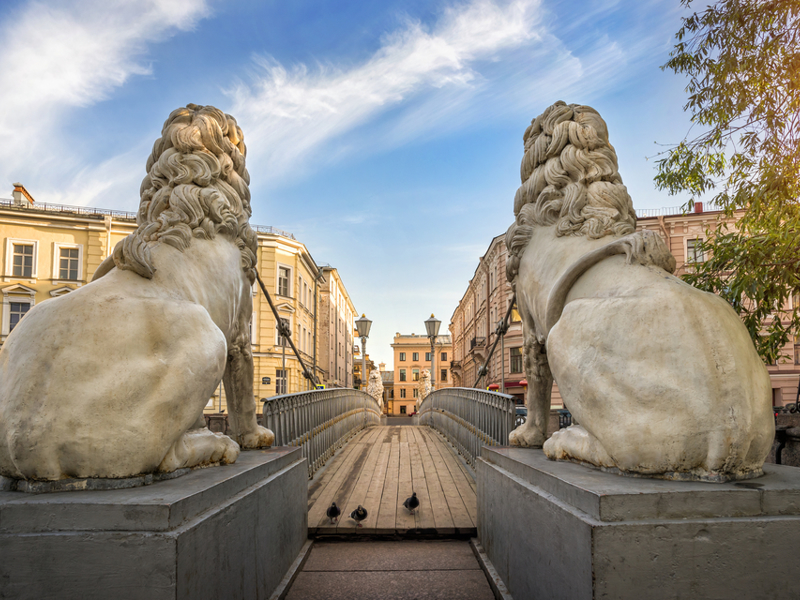
The Bridge of the Lions. Photo: Copyright © Sisterscom.com / Shutterstock
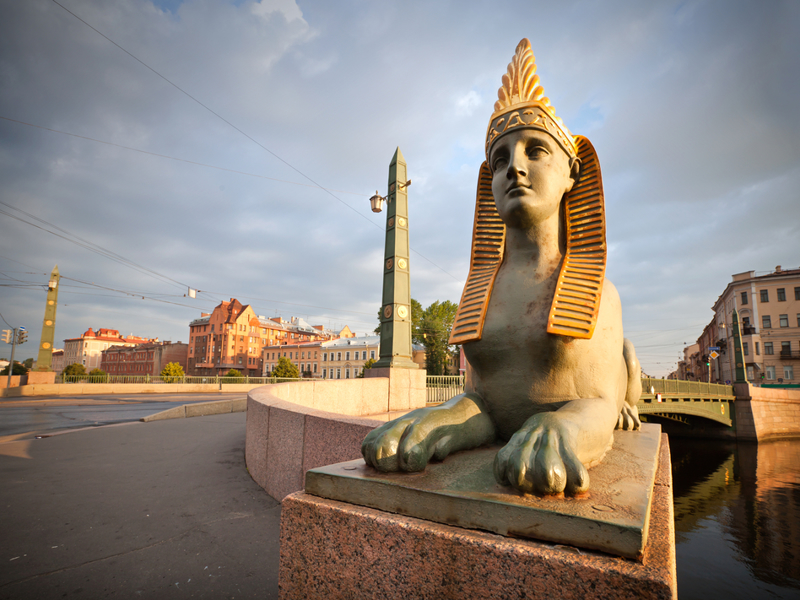
The Egyptian Bridge. Photo: Copyright © Sisterscom.com / Shutterstock
The Palaces around St. Petersburg
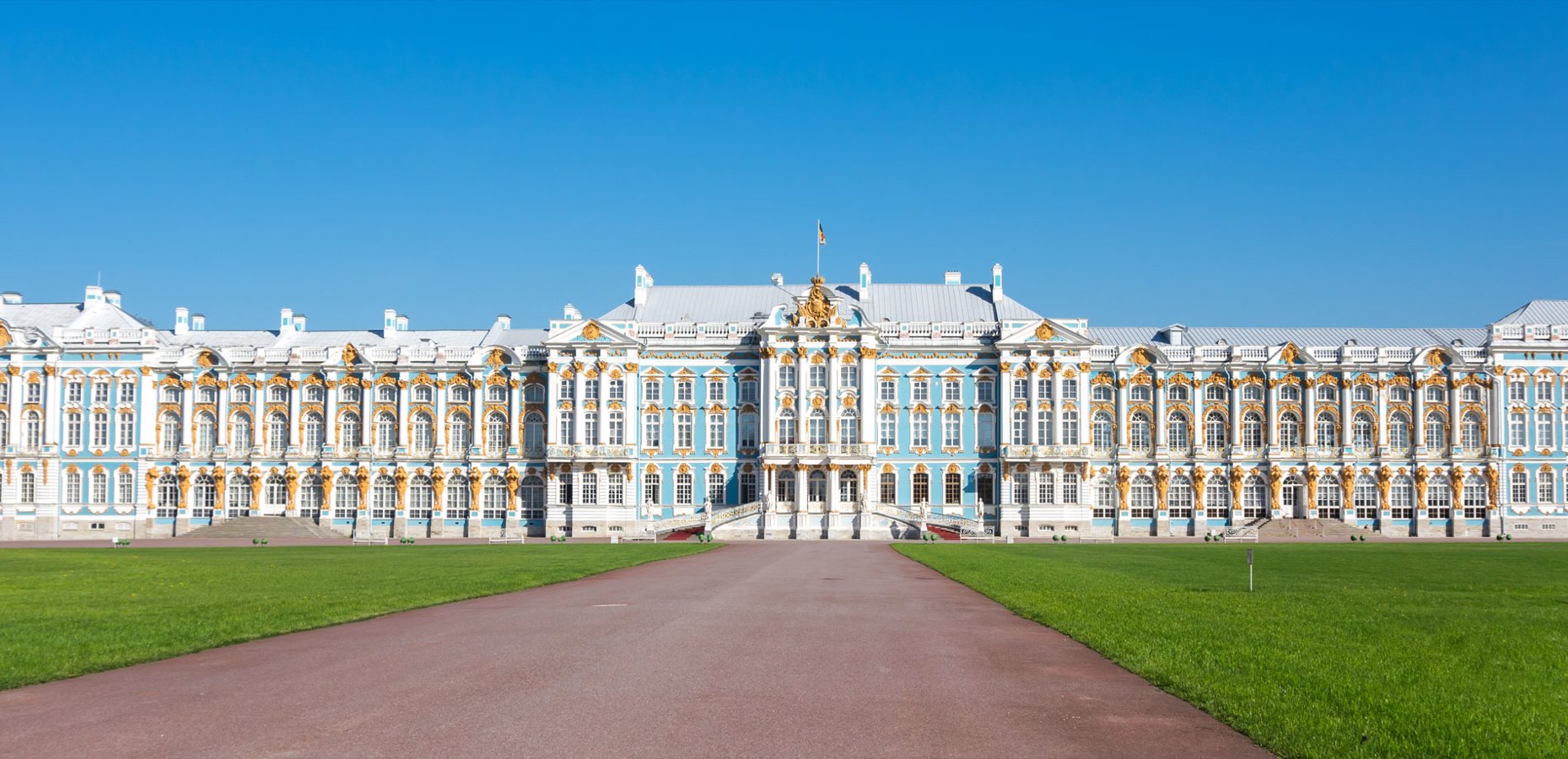
Caterina Palace. Photo: Copyright © Sisterscom.com / Gumbao / Shutterstock
The architectural beauties of St. Petersburg also include an imposing residence built by emperors in the countryside around the city such as the Catherine Palace, the Pavlovsk Palace with its immense gardens adorned with ponds and monuments and the Paterhof Palace with its splendid fountains.
The majestic Catherine Palace, with the longest façade in the world (more than 350 metres) houses the famous Amber Room and is surrounded by a large, elegant park, giving one an idea of the grandeur of the tsarist court.
Russian cuisine and its specialties
The Russian culinary traditions, influenced by Turkish cuisine and the Caucasus, are explained by history and climate. To the north, a lot of meat and fish are preferred. South dishes based on bird meat, vegetable and fruit dishes, accompanied by wine. Vegetables and fruit ripen very late, so all kinds of pickles are common in Russia. Soups are generally served with sour cream. To taste the okroshka soup with vegetables and smoked meat, the cabbage soup Shci and the borsch of beetroot. Also famous are the pelmeni meat ravioli served in broth, with tomato sauce or sour cream. On the peaceful shore, a fish-based cuisine has developed and the Kamchatka crab is the most famous of all Russian seafood. The trepang (sea cucumber) and the wild oysters of Sakhalin are also widespread. Gingerbread is famous throughout the country in different shapes and sizes.
Text by Luca Lembi
Photos: Sisterscom.com, Shutterstock
Photos: Sisterscom.com, Shutterstock
Video: www.visit-petersburg.ru
Copyright © Sisterscom.com
Published on Avion Tourism. Updated in April 2021 by Nicolò Villa.
Tourism Board
www.visit-petersburg.ru
eng.russia.travel
Where to sleep in St Petersburg
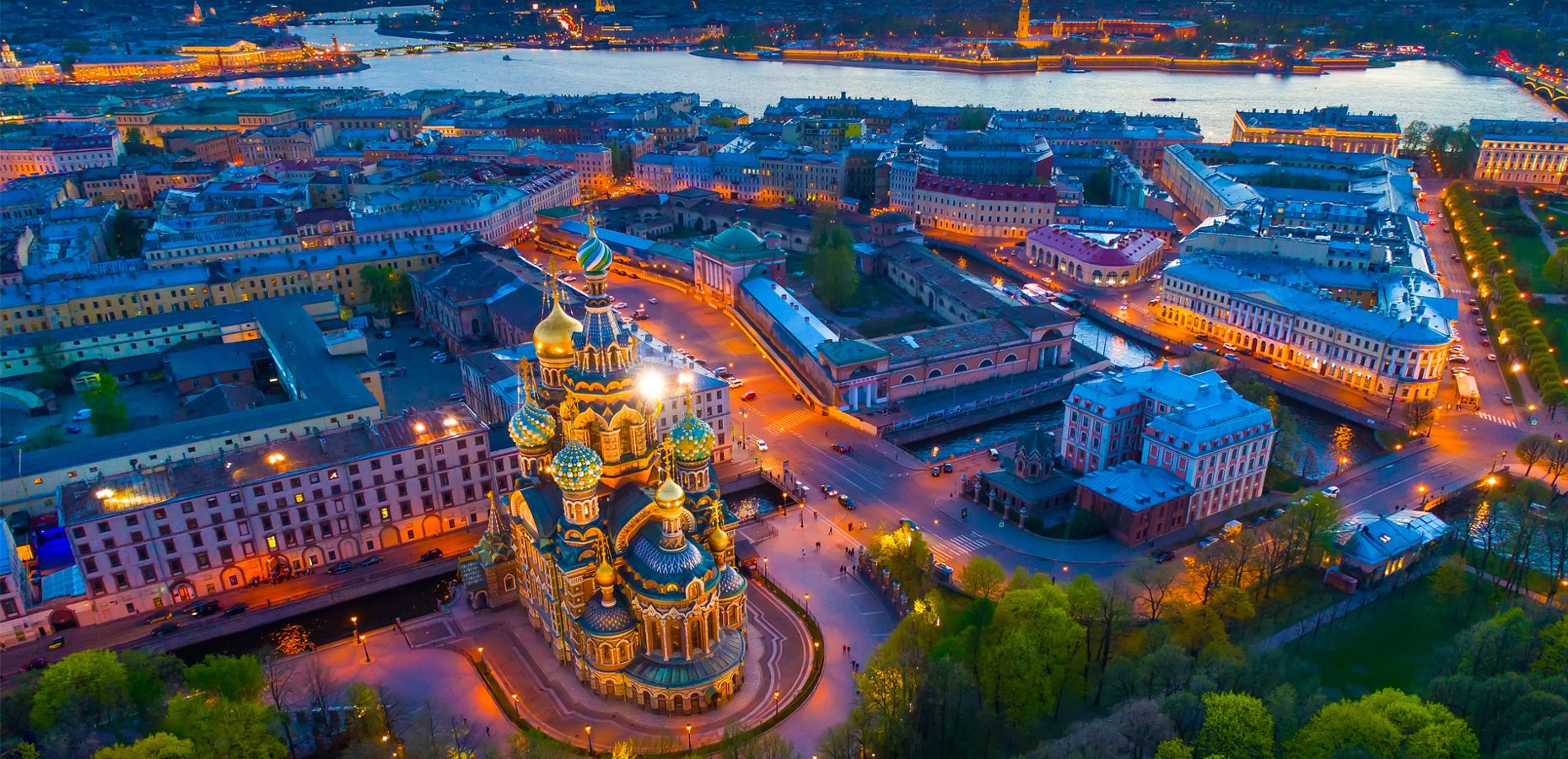
Photo: Copyright © Sisterscom.com / Gumbao / Shutterstock
St Petersburg is a welcoming city and offers different possibilities for accommodation.
To find the ideal hotel and the best offers you can do a search for the stars but also for districts or landmarks.
DISTRICTS
Hotels in the districts
LANDMARKS
Hotels in tourist areas
LANDMARKS
Hotels in tourist areas
AIRPORT
Hotels near the airport
WHERE TO GO to ST PETERSBURG
Churches and Palaces to St Petersburg
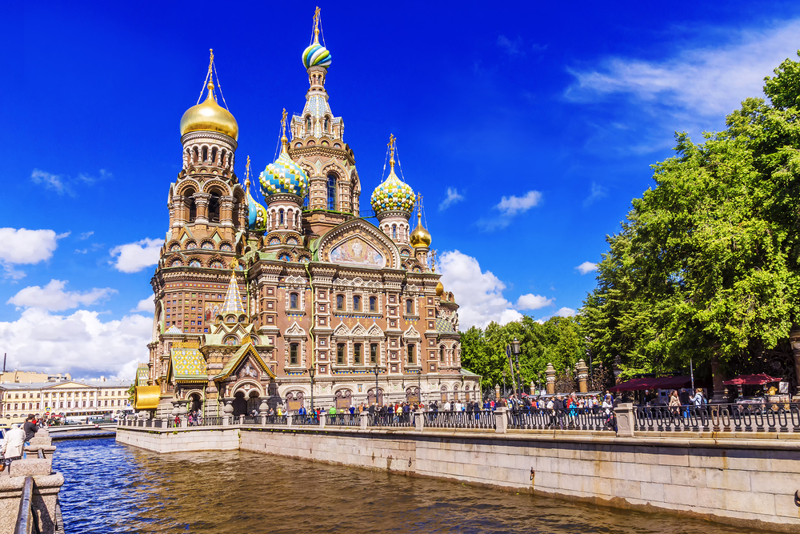
Photo: Copyright © Sisterscom.com / Shutterstock
Church of Our Saviour on Spilled Blood
The Church of the Saviour on Spilled Blood was built on the site where the emperor Alexander II died in 1881. The church, which was constructed from 1883 to 1907 and entirely financed by the imperial family, was embellished with over 7,500 square metres of finely detailed mosaics. The mosaics cover the walls and ceilings inside the church and depict biblical scenes or figures with borders with refined motifs that frame every image.
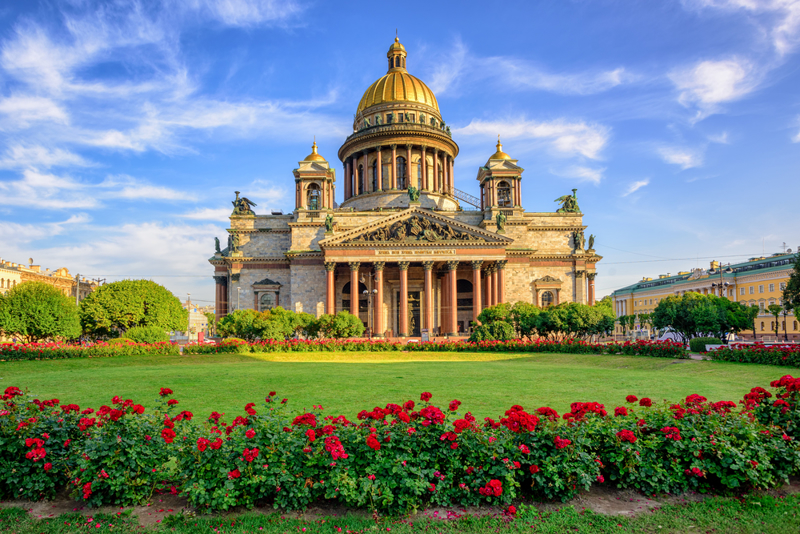
Photo: Copyright © Sisterscom.com / Shutterstock
Cathedral of St. Isaac
St. Isaac’s Cathedral is the largest Russian Orthodox cathedral in St. Petersburg, which is dedicated to St. Isaac of Dalmatia, protector of Peter the Great, who was born on the same day as the saint’s feast day. The church is situated in St. Isaac’s Square and was commissioned by the tsar Alexander I. Built in neoclassical style, it features Russian-Byzantine architecture with a Greek cross plan, a large central dome and four secondary domes. The exterior is clad in pink and grey stone and embellished with 112 red granite columns with Corinthian capitals, 24 statues on the roof and another 24 at the top of the rotunda. The main dome is at 101.5 metres and is plated in gold and decorated with twelve statues of angels.
www.cathedral.ru
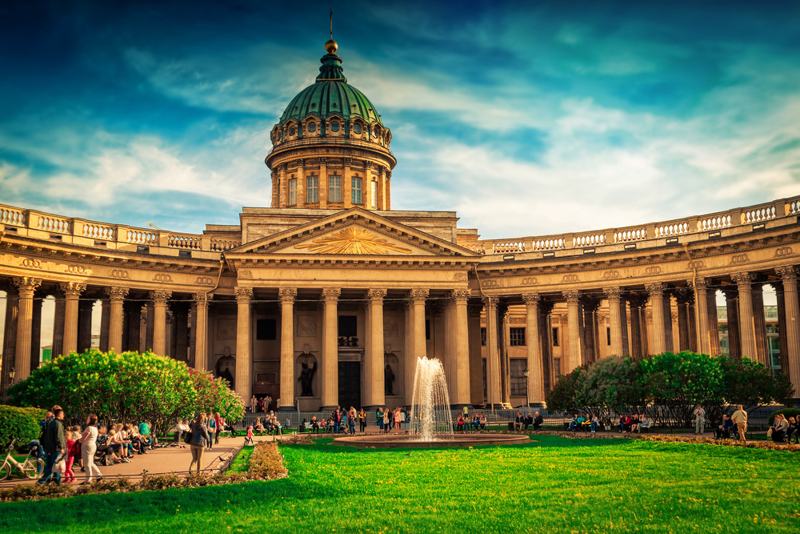
Photo: Copyright © Sisterscom.com / Shutterstock
Kazan Cathedral
Kazan Cathedral, dedicated to the Madonna of Kazan, is one of the largest cathedrals in Saint Petersburg. It was built between 1801 and 1811 by architect Andrey Voronikhin by order of Emperor Paul I who wished for it to resemble Saint Peter’s Basilica in Rome. Characterised by a semi-circular colonnade that decorates the lateral façade, the cathedral is a monument to the glory of Russian armed forces and houses the tomb of the Russian Marshal Mikhail Kutuzov and also is home to a copy of the icon of the Madonna of Kazan.
kazansky-spb.ru
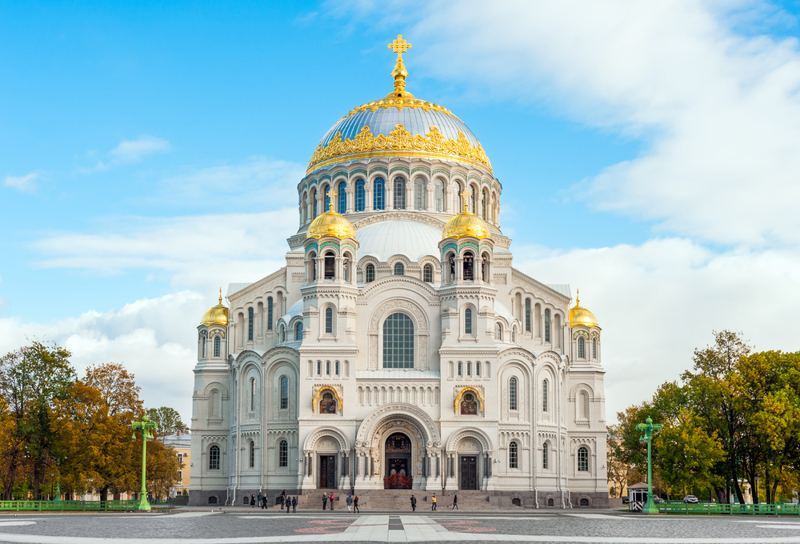
Photo: Copyright © Sisterscom.com / Shutterstock
Kronstadt Naval Cathedral
The Naval Cathedral of St. Nicholas of the Epiphany in St. Petersburg is a monument of Russian architecture dating back to the mid-eighteenth century, whose history is linked to the traditions of the Russian naval fleets. The cathedral, built between 1753 and 1762, was designed by architect S. Chevakinsky in the Elizabethan Baroque style and can hold about 5000 people. Between 1755 and 1758 a separate bell tower was built on four levels with a tall spire.
www.nikolskiysobor.ru
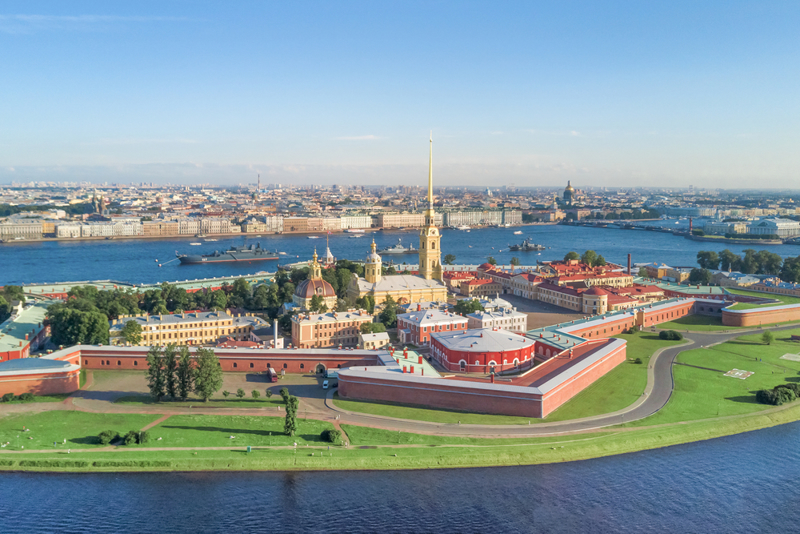
Photo: Copyright © Sisterscom.com / Shutterstock
Peter and Paul Fortress
The Peter and Paul Fortress, founded by Peter I in 1703, is a fortified artistic monument dating back to the 18th – 20th centuries. The dominant structure is the Cathedral of Peter and Paul, the burial place of the Russian emperors and empresses from Peter I to Nicholas II, with the exception of Peter II and Ioann VI. The citadel, in the shape of a six-pointed star, was designed by French engineer Joseph-Gaspard Lambert. In the eighteenth century it became a prison for state criminals. In 1924 the prison of the Trubetskoy bastion was used as a museum and in 1954 the entire complex of the Peter and Paul fortress was donated to the State Museum of History of Leningrad (St. Petersburg).
www.spbmuseum.ru
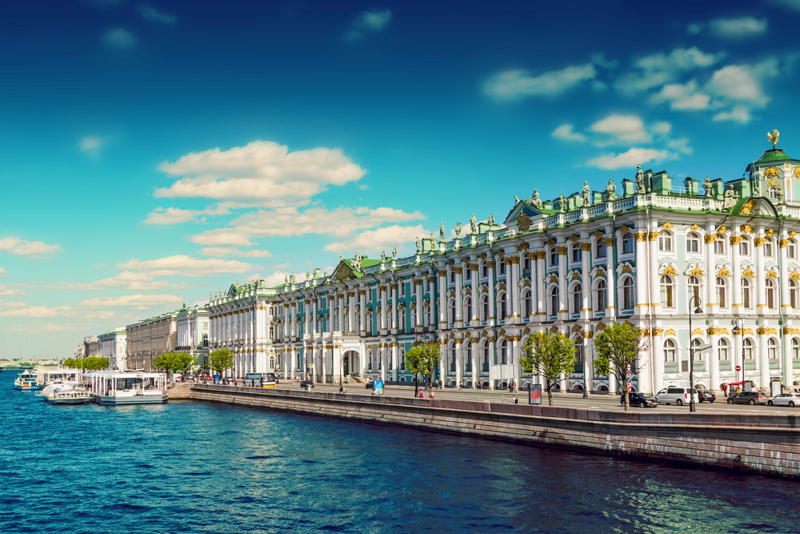
Photo: Copyright © Sisterscom.com / Shutterstock
Hermitage Palace - Winter Palace
The Winter Palace, an imperial residence for 150 years, is now part of the Hermitage Museum Complex. The elegant palace represents Baroque Russian art of the mid-eighteenth century, with façades embellished with a two-tiered colonnade towering upwards, numerous statues, vases on the roof, decorations, imaginative cornices, architraves on the windows and pediments. The architect Rastrelli gave each of the four facades of the building a different structural rhythm. The south façade, which dominates the square, has three arches that create a large entrance into the courtyard. The majestic north façade, with the endless colonnade, overlooks the Neva. The western façade recalls the appearance of a country palace with a small courtyard. While the monumental eastern façade forms a large courtyard of honour on Millionnaya Street. In 1917, after the October Revolution, it was converted into a museum.
www.hermitagemuseum.org
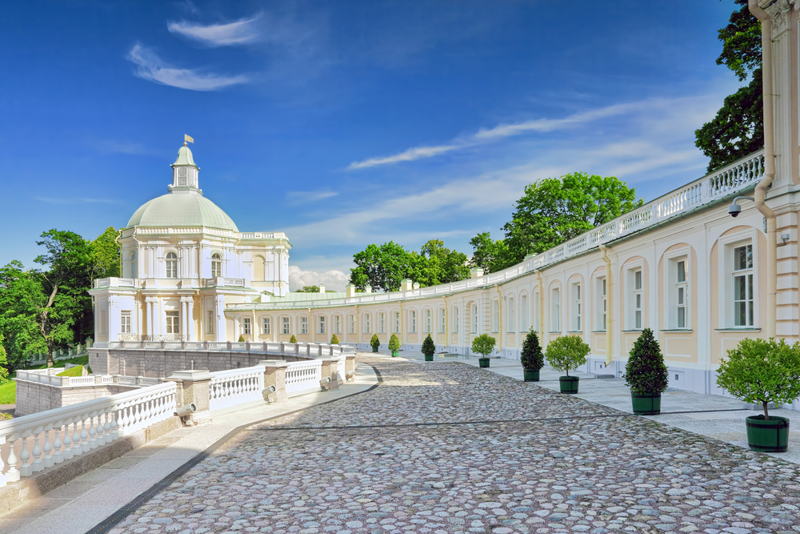
Photo: Copyright © Sisterscom.com / Shutterstock
Menshikov Palace
Menshikov Palace, founded in 1710 as the residence of the Governor General of St. Petersburg Alexander Menshikov, was built by the architects Giovanni Maria Fontana and Gottfried Johann Schädel. The work continued until 1727 (with the help of Domenico Trezzini, Bartolomeo Rastrelli, Georg Johann Mattarnovy and Jean-Baptiste Le Blond) when Menshikov was exiled with his family to Siberia and the property was confiscated. In 1924, the collections of the Menshikov Palace were transferred to the Hermitage and other museums, while from 1956 to 1981 it was restored and opened to the public as a branch of the Hermitage Museum, with a collection of Russian art of the late 17th and 18th centuries.
www.hermitagemuseum.org
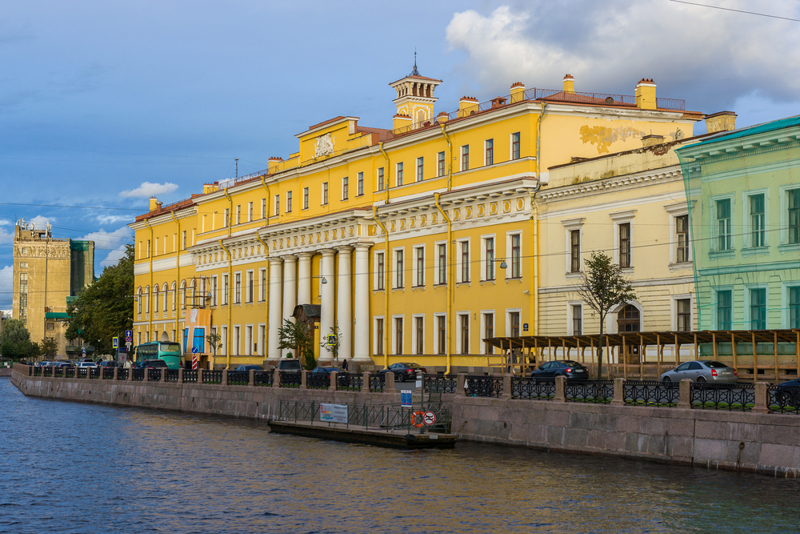
Photo: Copyright © Sisterscom.com / Shutterstock
Yusupov Palace
Yusupov Palace is a complex of historical and cultural buildings renowned the world over: the Family Residence of the Princes, the Museum of Noble Life, the House of the Regional Master, the St. Petersburg Palace of Culture for Educators.
The Yusupov Palace building is used for ceremonies, as a venue for administrative and diplomatic meetings or international conferences. The building’s guests of honour are amongst Russian government officials, foreign heads of state and international stars.
www.yusupov-palace.ru
Museums of St Petersburg
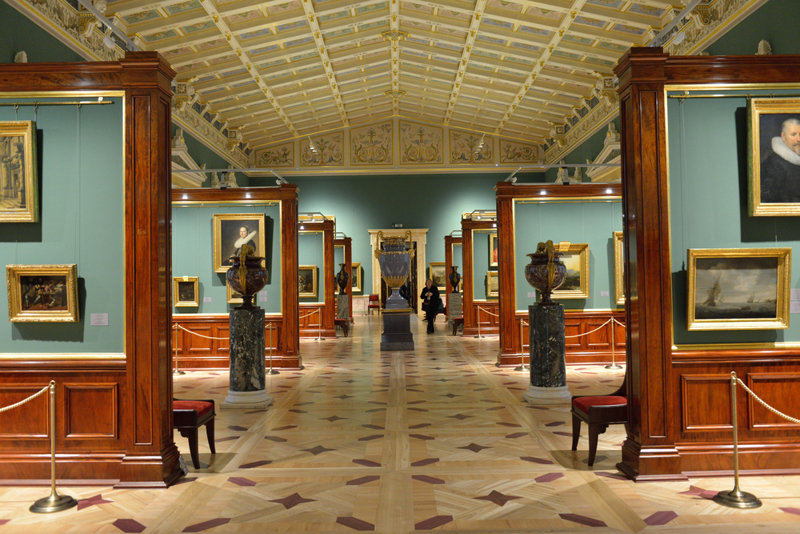
Photo: Copyright © Sisterscom.com / Shutterstock
Hermitage Museum
The Hermitage Museum collection, originally created by the works of the Russian Empress Catherine II, includes over three million works. The main exhibits are in the Main Museum Complex, which includes by the Winter Palace (residence of the former emperor), the Small Hermitage, the Old Hermitage, the New Hermitage and the Hermitage Theatre. The Main Museum Complex exhibits monuments of culture and the arts of the ancient world (Europe, Russia and the East), archaeological and numismatic collections. Not to be missed: two paintings by Leonardo da Vinci, a sculpture by Michelangelo and paintings by Rembrandt. The exhibits of the Hermitage Museum are also found in the Winter Palace of Peter I, in the Menshikov Palace, in the Imperial Porcelain Factory Museum, in the centre of Staraya Derevnya.
www.hermitagemuseum.org
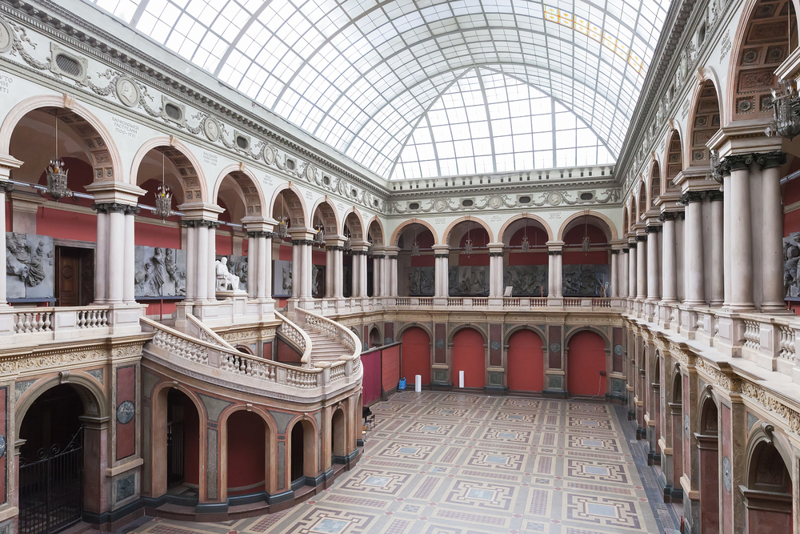
Photo: Copyright © Sisterscom.com / Shutterstock
Stieglitz Museum
The Stieglitz Museum, designed by M. Messmacher, dates back to 1878 and houses over 30,000 objects of applied art from antiquity to the present day. The extensive collection includes porcelain and oriental ceramics from Western Europe, particular pieces of furniture from the 16th to 19th centuries, a unique collection of 18th century Russian majolica stoves, metals, art fabrics and student works from the second half of the 20th century. The Historical Museum collects around 2,000 pieces in various rooms and galleries: Italian galleries with unique pieces of furniture from various historical periods; Russian applied art objects in the "Teremok" hall such as costumes, Russian ethnographic dolls, forged metal products, furniture; the collection of ceramics and porcelain in Western Europe with 16th century Italian majolica and porcelain from Berlin, Meissen and Sevres from the 18th century. The Museum of Applied Arts of the Academy of Arts and Design in St. Petersburg reflects the trends of Russian applied art over the years.
www.stieglitzmuseum.ru
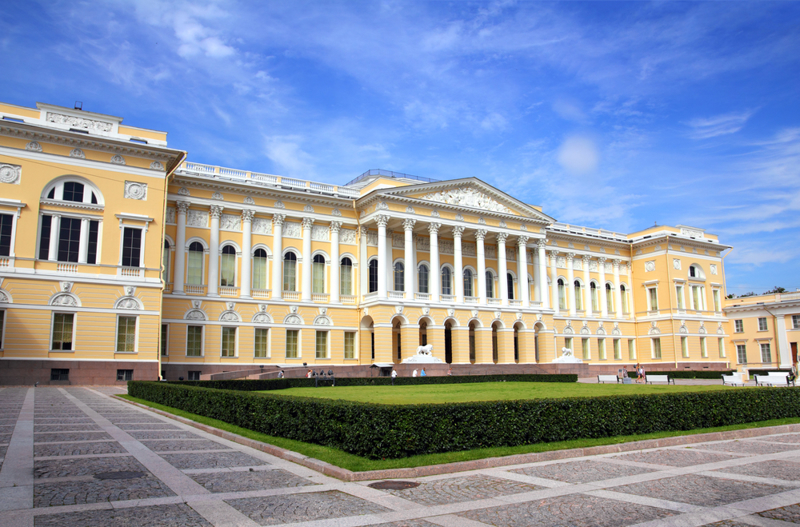
Photo: Copyright © Sisterscom.com / Shutterstock
State Russian Museum
The collections of the Russian Museum are located in the Mikhailovsky Palace, built for one of the sons of Emperor Paul I, the Grand Duke Mikhail Pavlovich, designed by the architect C. Rossi. The palace is an architectural masterpiece, an excellent example of high classicism in Russian architecture. The palace is also famous for its music hall where the inhabitants of St. Petersburg could hear Liszt, Berlioz, Schuman and Wagner. The collection of the Russian Museum is over 400,000 pieces of all historical periods in the history of Russian art, from the eleventh to the twenty-first century. The museum also houses a collection of applied folk art, such as national handicrafts, embroidery, fabrics and Russian clothes.
www.rusmuseum.ru
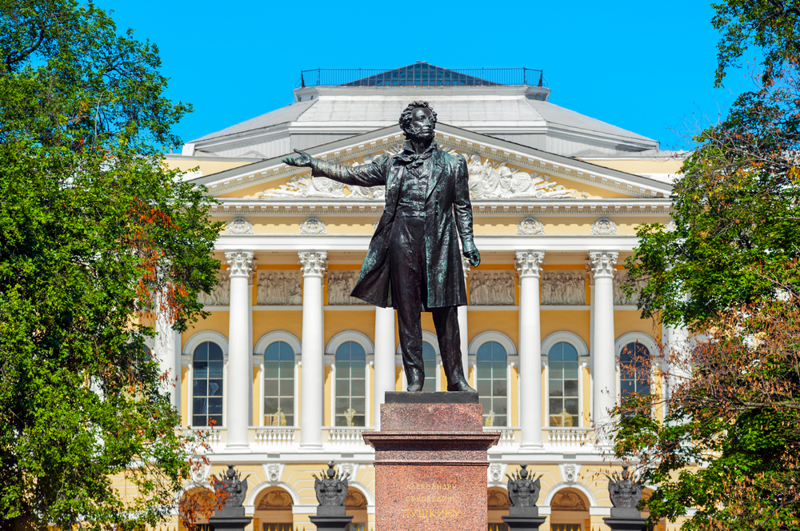
Photo: Copyright © Sisterscom.com / Shutterstock
National Pushkin Museum
This is the Museum of the Pushkin Apartment, in one of the oldest residences of St. Petersburg that belonged to the Volkonky Dukes in the 19th century. The Museum is located in the last apartment of the Russian poet Alexander Pushkin, a memorial that testifies the period of his life before his death in 1837, after being mortally wounded in a duel. The central part of the exhibition is focused on his studio where he wrote some of his novels.
www.museumpushkin.ru
Excursions a St Petersburg
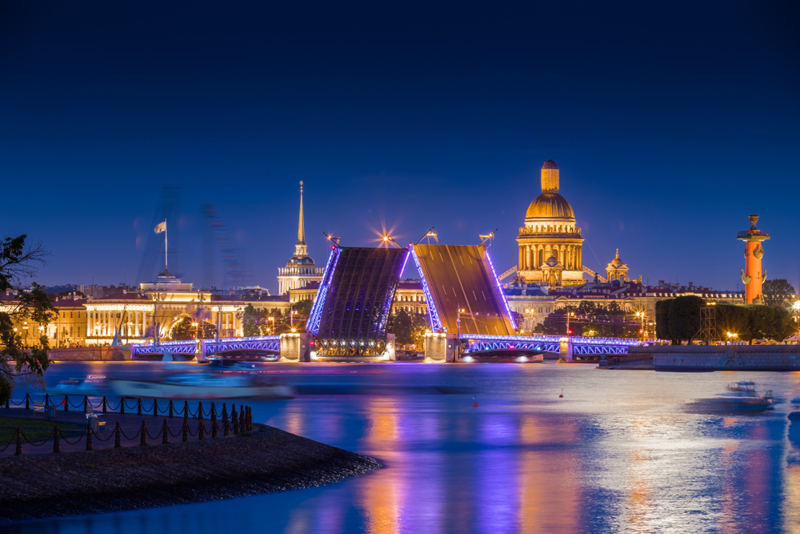
Photo: Copyright © Sisterscom.com / Shutterstock
Bridges of St. Petersburg
In St. Petersburg there are numerous bridges that traverse rivers and canals, some of these are drawbridges, such as the famous Birzhevoy Bridge that connects Vasilievskiy island. Some are decorated, others picturesque or romantic. The best way to see them closely and especially in action is with a 2-hour cruise along the Neva river at night. For example, the Palace Bridge and the Trinity Bridge can be seen as they rise to allow boats to pass, but also the monuments on the Vasilyevsky Island illuminated for the evening, the Castle of San Michele surrounded by canals and the magical evening lighting of the Peter and Paul Fortress. Before the bridges rise, many people make a wish.
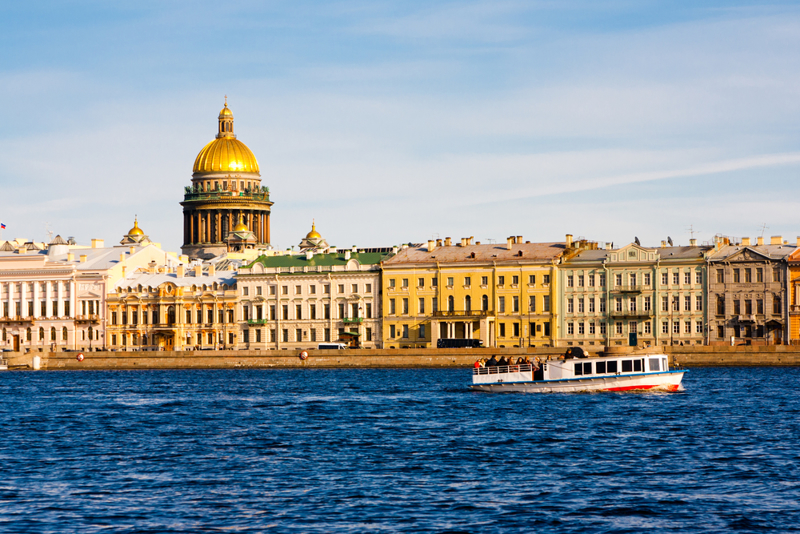
Photo: Copyright © Sisterscom.com / Shutterstock
Boat tour in St. Petersburg
A boat tour allows you to better understand why St. Petersburg has been called the Venice of the North.
A cruise along the rivers and canals of the city reveals spectacular monuments, some of the most beautiful bridges in the city, the impressive cathedrals and the imperial palaces from the water. You can sail along the river Neva, starting from Lake Ladoga and cross the city to the Gulf of Finland, go beyond the artificial New Holland Island, created in 1719, when the Kryukov Canal and the Admiralty Channel were built to connect the Moika River with the Neva River.
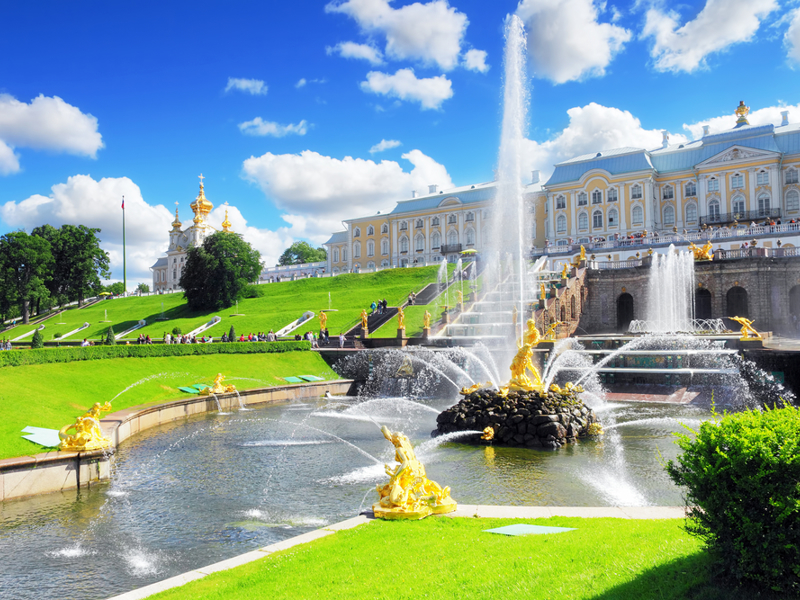
Photo: Copyright © Sisterscom.com / Shutterstock
Peterhof Palace
Peterhof is a park-palace with a museum complex which features parks, gardens and fountains. In the past it was a former residence of the Russian monarchs, created by exceptional architects, decorators and sculptors. Peter the Great designed Peterhof as a residence on the Gulf of Finland sea, as an attempt to compete with Versailles, and as a triumphal symbol of the successful conclusion of Russia's struggle for an outlet on the Baltic Sea. Opened in 1723 it was then destroyed during the Second World War and rebuilt in the following decades. It is included in the state register of the most valuable cultural assets of the Russian Federation: Peterhof bears the title of one of the "Seven Wonders of Russia".
peterhofmuseum.ru
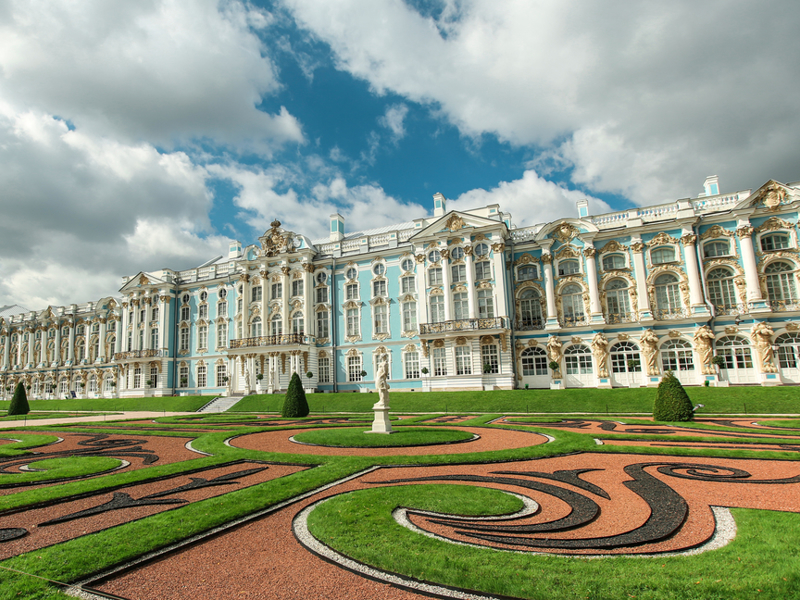
Photo: Copyright © Sisterscom.com / Shutterstock
Catherine Palace
Catherine Palace is an exemplary building in Russian Baroque style, with richly decorated interiors including the famous Amber Room. The exhibition of Catherine Palace Museum presents the work of the architects involved in its construction and decoration in the eighteenth and nineteenth centuries and that of the restorers who rebuilt the rooms destroyed in the years of the Second World War. It is a place to experience the pageantry of Empress Elisabeth and Catherine II through luxury and unique furnishings. The Great Hall and the Golden Enfilade by architect Bartolomeo Francesco Rastrelli, as well as the state studio of Alexander I by architect Vasily Stasov, one of the best rooms in the Empire style of Russian architecture, are not to be missed.
www.tzar.ru
Recommended tours a St Petersburg
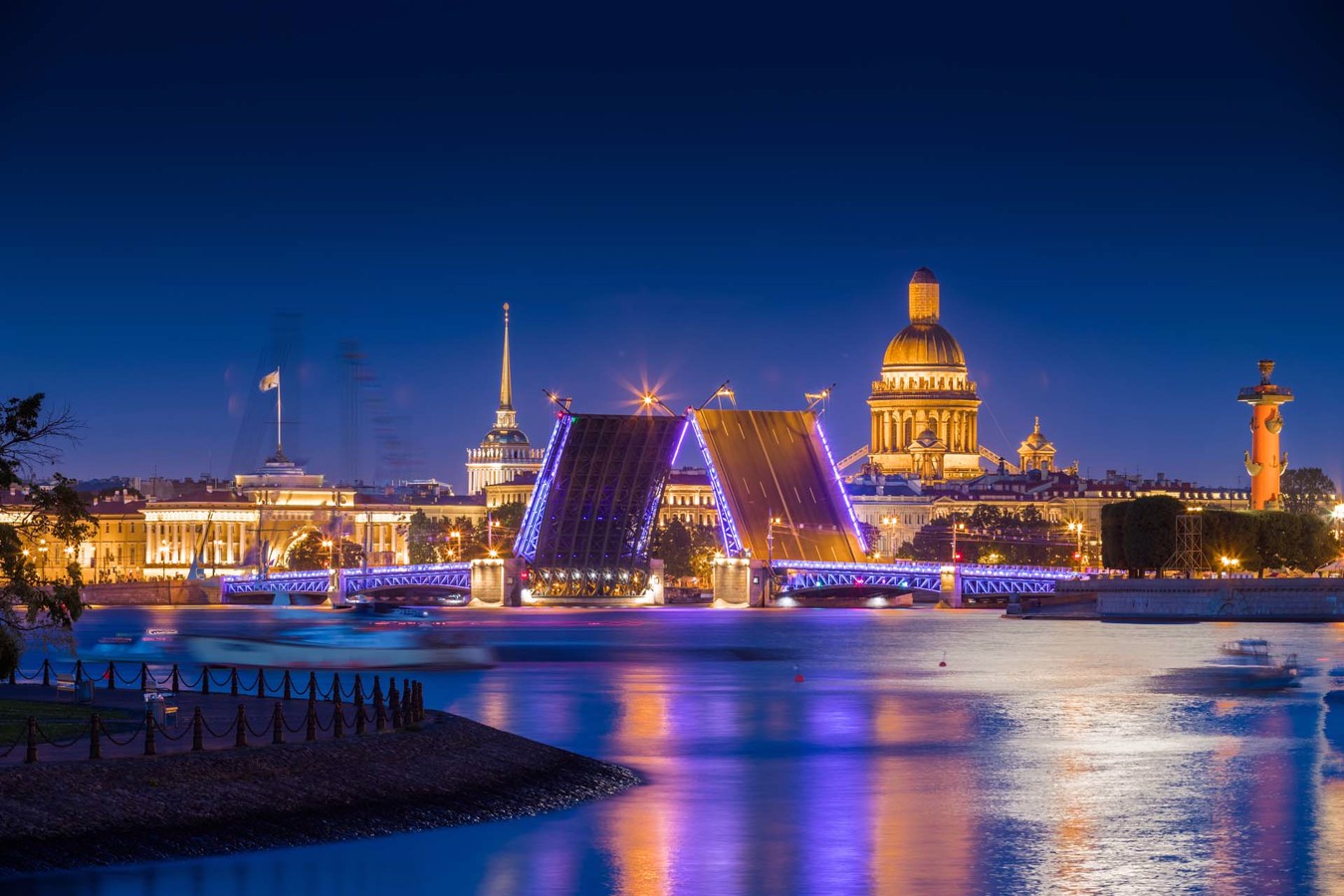
The Bridges of St. Petersburg at night. Photo: Copyright © Sisterscom.com / Drozdin Vladimir / Shutterstock
Suggestive evening boat tour to admire the mobile bridges raised on the Neva. Evening cruise between raised movable bridges.
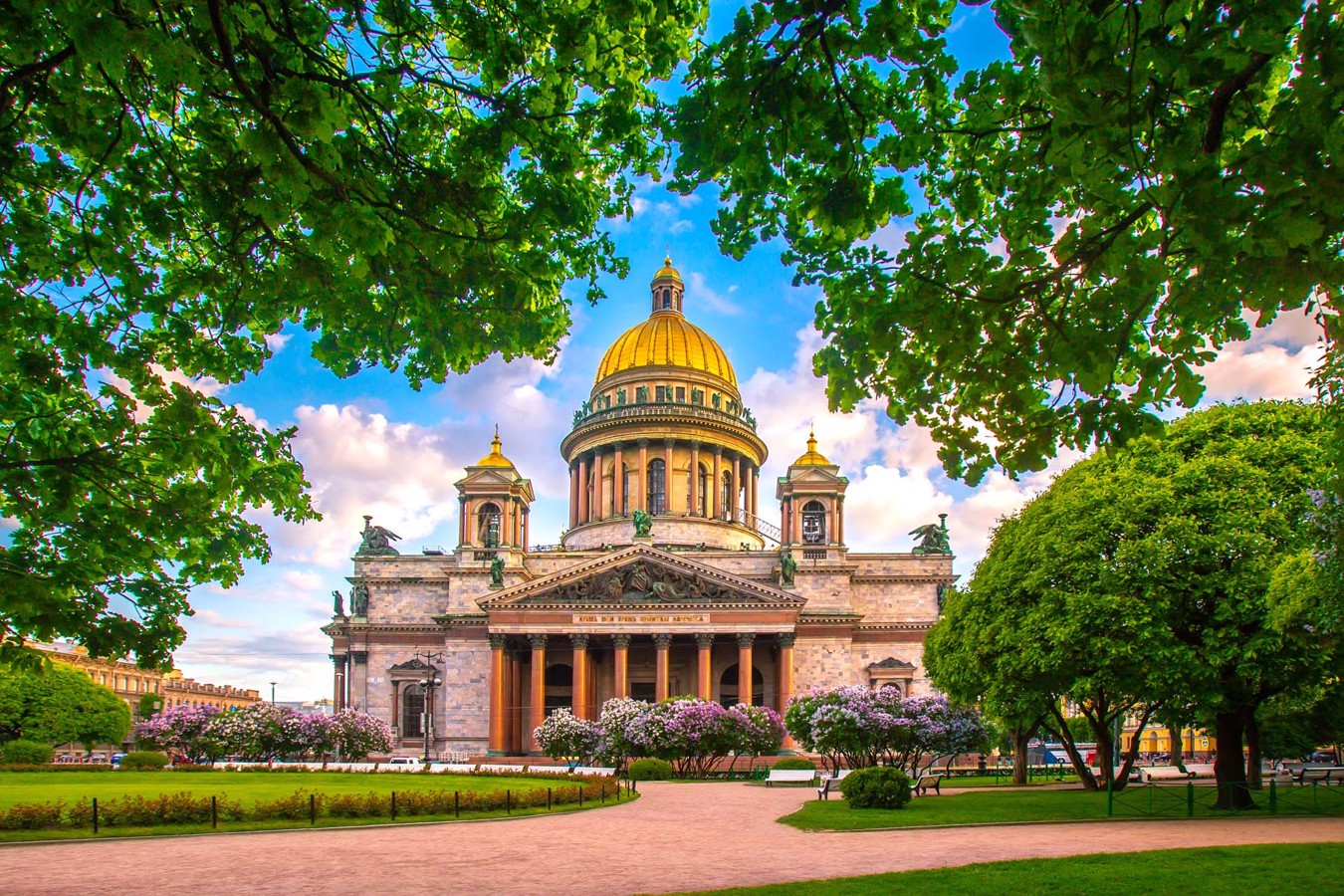
St. Isaac's Cathedral in St. Petersburg. Foto: Copyright © Sisterscom.com / Shutterstock
Visit the cathedrals of St. Petersburg on a 4-hour private tour. Cathedrals tour.
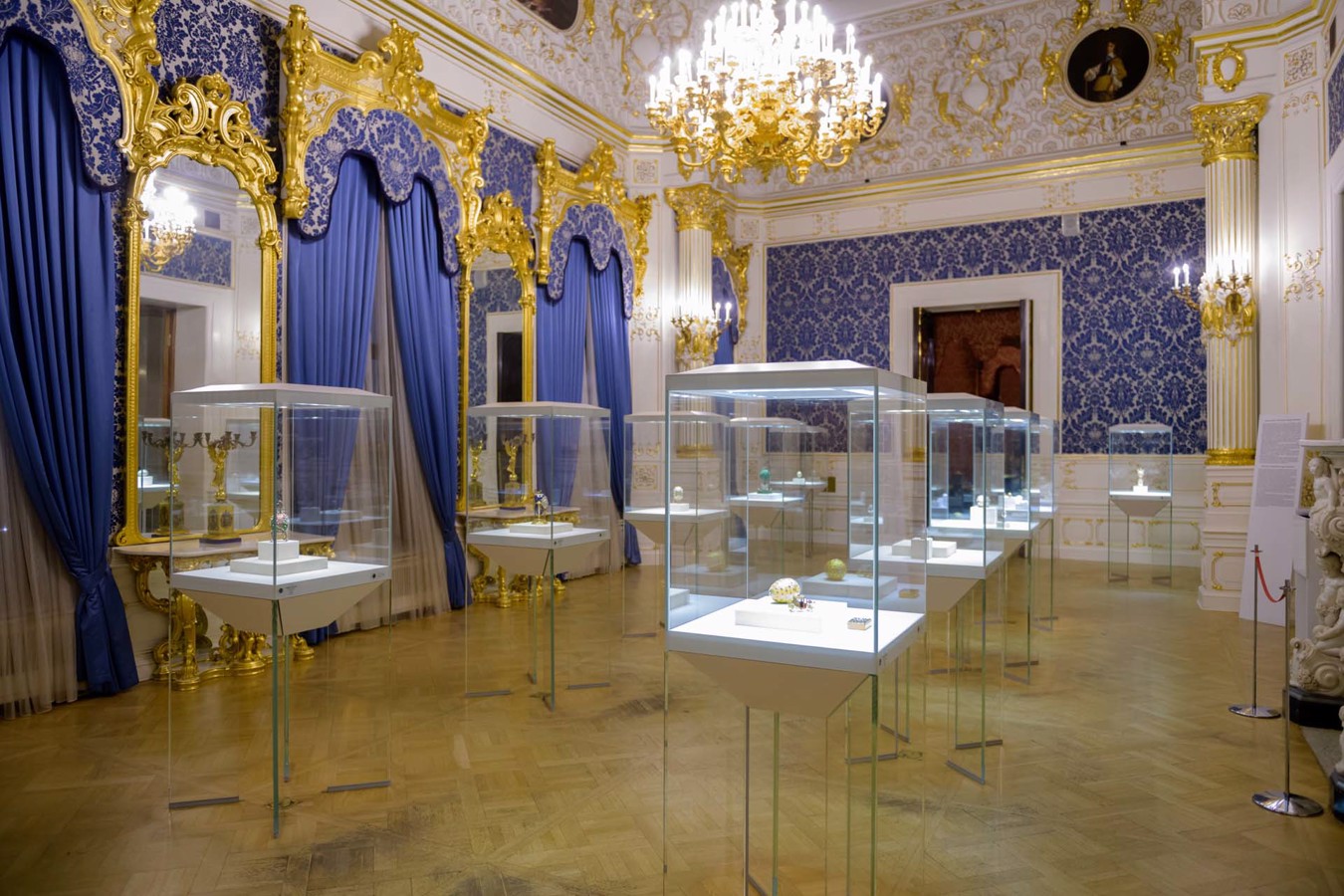
Fabergé Museum. Foto: Copyright © Sisterscom.com / Anton Veselov / Shutterstock
Visit the Fabergé Museum and discover the treasures of the imperial family. Ticket and private tour to the Fabergé Museum.
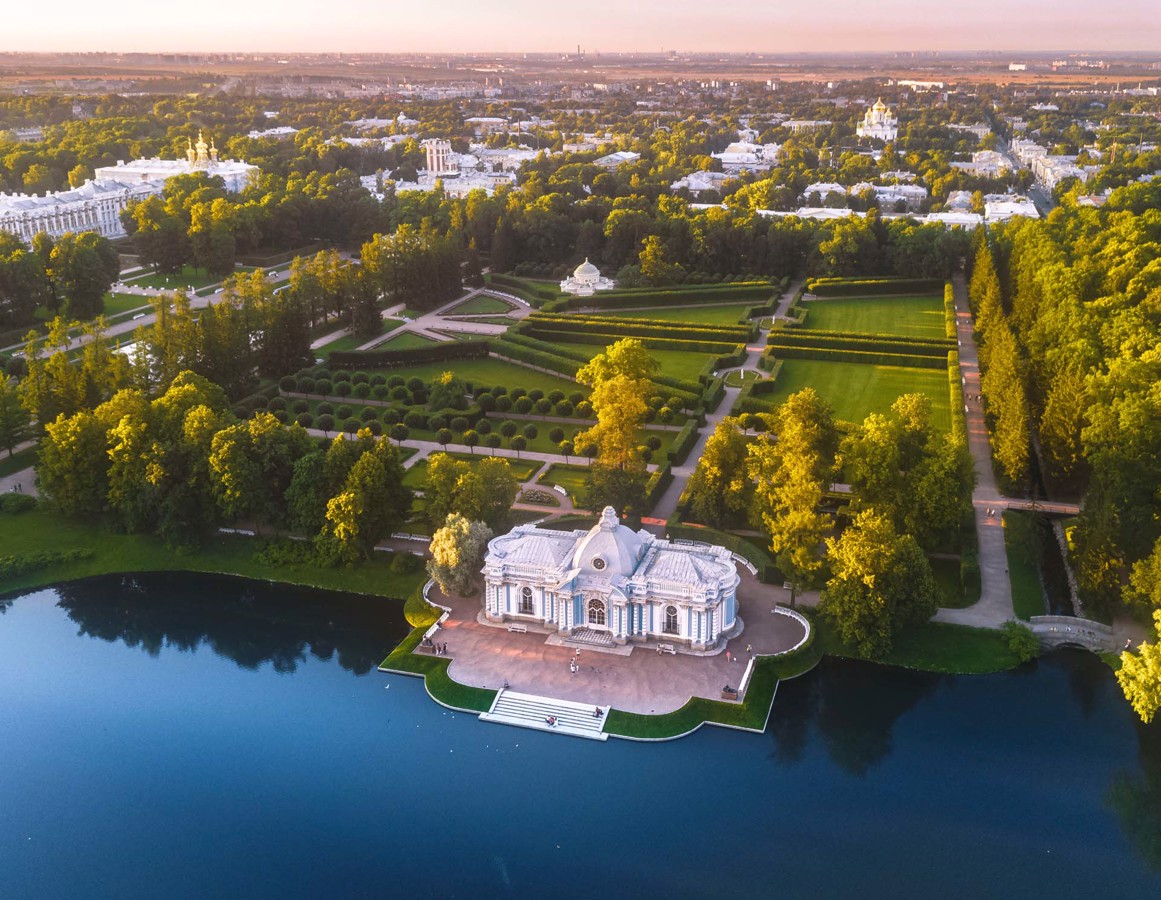
Catherine Palace in Pushkin. Foto: Copyright © Sisterscom.com / Shutterstock
Visit Pushkin and the Catherine Palace and its gardens, discovering the splendor of the Amber Chamber.
News & Useful info
You might be interested in
Destinations found in the vicinity
Other destinations
Airports nearby St Petersburg

